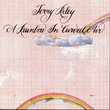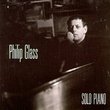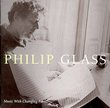| All Artists: Philip Glass Title: Music in 12 Parts Members Wishing: 0 Total Copies: 0 Label: Virgin Records Release Date: 2/8/1990 Album Type: Box set Genres: Dance & Electronic, Jazz, New Age, Classical Styles: Techno, Meditation Number of Discs: 3 SwapaCD Credits: 3 UPC: 075679131126 |
Search - Philip Glass :: Music in 12 Parts
 | Philip Glass Music in 12 Parts Genres: Dance & Electronic, Jazz, New Age, Classical
|
CD DetailsSimilar CDs |
CD ReviewsA checklist before buying Chris Speaks | Winston-Salem, NC | 06/13/2006 (5 out of 5 stars) "In order to approach Philip Glass's Music in Twelve Parts, I recommend the following prerequisites: 1.) Make sure that you have enough money to purchase this extraordinary piece of music. While the three discs which make up this piece of music may tend to be categorized as "box set," in truth, this is no compilation of Philip Glass's greatest hits or rarities. Instead, what you receive is the singular, defining greatest 'hit' of Glass' repetoire. 2.) Set aside at least 3 hours and 26 minutes of your day to sit and listen to this piece of music uninterrupted as it will take at least that long to make it through all three discs. "Music In Twelve Parts" is a single piece of music, just like Mozart's "Requiem" or Prokofiev's "Romeo and Juliet," and while one is capable of listening to the individual parts out of sequence, doing so would ruin the intended effect of the piece of music as a whole. 3.) Listen with open ears and an open mind. One of the problems many people face when meeting Glass for the first time is that they are confronted in an ugly sort of way that Philip Glass does not sound like the traditional composers, like Beethoven, Debussy, or even Brahms, and he doesn't even sound atonal, like Boulez, Messiaen, or Schoenberg: many realize that Glass is in a category wholly removed from these composers, and they tend to not like it because they were expecting something else. I say this because not only was this my first perception of Glass, but it's also the same sort of response I meet in others, such as friends or family, when introducing them to the work of Philip Glass. Glass' early work, especially Music in Twelve Parts is riddled with arpeggios. Yet, while there is definitely an electronic keyboard driving the pulse of the piece from start to finish, the true quality of the piece is displayed in the other musicians, especially the woodwinds, who must not only keep pace, but who must also be able to change key and delve into further slight variations on the drop of a dime. Music in Twelve Parts may, indeed, sound minimal and abruptly simple, but the endurance required when playing such a piece requires immense skill and precision. Be sure to keep your ear attuned for this. 4.) Finally, enjoy. The great thing about Glass' music is that there's no interpretation needed, no cryptic meanings, and no hidden secrets. If you play Music in Twelve Parts backwards, what you hear is Music in Twelve Parts. Nothing more, sorry. It's an excellent piece of music, and a wonderful experience!" Can get a bit dull, but well worth a listen. Jason Merlo | Austin, TX USA | 03/29/2006 (4 out of 5 stars) "I always seem to discover something new each time I put one of these discs in. Repetitive, mathematical, and frenetic. Great background music. If I had a gripe it would be that after a while, this type of minimalist music gets a little monotonous. I haven't yet been able to make it through all 12 parts without taking a break. If you like this CD set, I'd recommend "The Continuing Story Of Counterpoint" by David Borden. It has a bit more variety." One and two: worthwhile; Three to twelve: forget mhouse | Phoenix, AZ United States | 02/05/2007 (3 out of 5 stars) "It takes a person with stamina to be able to listen to Music in 12 Parts in one or several sittings. A condensed version on 1 CD would suffice, and then, it would be difficult to listen to as well. I am not a musician so I can only peripherally enjoy the musicianship. Gee whiz, it must have been difficult to play those instruments for that length of time. As for "music" it is hard to categorize as such. Not much changes in many of these long pieces, each averaging about 17 minutes. It IS minimal in that regard, which doesn't bother me. It's just that so many of the pieces here are not pleasant to the ear.
Being a Glass fan, I can, however, highly recommend parts 1 and 2. Part one is what Philip Glass intended as "Music in 12 Parts" until he played it for someone and they said "great...how do the other 11 sound?" which intrigued him enough to continue with 11 more parts. I rarely if ever venture into CDs 2 and 3. But, parts 1 and 2 are delicious, melodious and enjoyable. I paid $12 at a used CD store and it's worth that to add to an already extensive Glass collection. If you find it under $20 AND you are a Glass fan, buy it." |

 Track Listings (3) - Disc #1
Track Listings (3) - Disc #1


